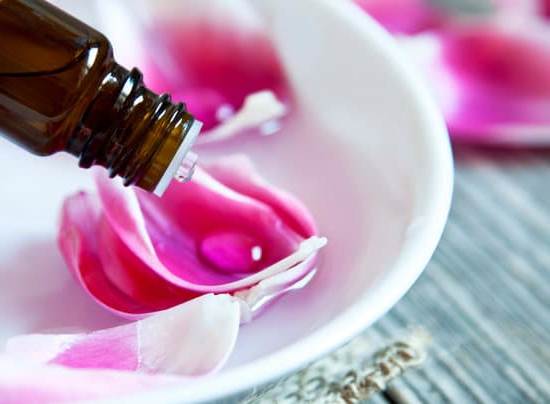Aromatherapy has gained immense popularity in recent years as a holistic approach to wellness, using essential oils like peppermint oil for various therapeutic benefits. Peppermint oil, known for its refreshing scent and invigorating properties, is a staple in many aromatherapy practices. However, a common question that arises is: Is aromatherapy peppermint oil edible?
Peppermint oil has a long history dating back to ancient times, where it was used for a variety of purposes, including medicinal and culinary applications. In the realm of aromatherapy, peppermint oil is cherished for its ability to promote mental clarity, relieve headaches, and soothe digestive issues. This versatile oil has become a go-to option for those seeking natural remedies for everyday ailments.
When it comes to the safety of ingesting aromatherapy peppermint oil, precautions must be taken to ensure proper usage. It is essential to distinguish between food-grade peppermint oil specifically intended for consumption and traditional aromatherapy oils meant for external use only. Understanding the differences and potential risks associated with internal use is crucial in harnessing the full benefits of this potent essential oil.
The Origins of Aromatherapy Peppermint Oil
Peppermint oil, known for its refreshing and invigorating scent, has a long history dating back to ancient times. The use of peppermint dates back to Egyptian, Greek, and Roman cultures, where it was valued for its medicinal properties. Peppermint oil is derived from the leaves of the peppermint plant through steam distillation, preserving its potent aroma and therapeutic benefits.
In aromatherapy, peppermint oil is highly regarded for its cooling and soothing effects on the mind and body. It is commonly used to alleviate symptoms of headaches, nausea, and respiratory issues. Additionally, peppermint oil is believed to improve focus and mental clarity when diffused or applied topically in diluted form. Its uplifting properties make it a popular choice for reducing stress and promoting relaxation.
Traditionally, peppermint oil has been used in natural remedies for digestive problems such as indigestion, bloating, and gas. Its high menthol content provides a cooling sensation that can help soothe the stomach and aid digestion. In addition to its digestive benefits, peppermint oil is also known for its antimicrobial properties which can help fight off harmful bacteria in the body.
Benefits of Peppermint Oil in Aromatherapy
Plays a Significant Role in Its Therapeutic Properties
, making it a popular choice among essential oils enthusiasts.
List of Benefits When Used Topically or in a Diffuser
When applied topically, diluted peppermint oil can help soothe muscle aches and pains, reduce inflammation, and even repel insects. In a diffuser, the aromatic benefits of peppermint oil are vast – from boosting energy levels and improving concentration to promoting relaxation and easing digestive discomfort.
Menthol Content and Its Therapeutic Properties
The high menthol content found in peppermint oil is what gives it its characteristic cooling sensation. Menthol is known for its ability to alleviate headaches, sinus congestion, and even improve breathing during times of respiratory distress. This makes peppermint oil a versatile essential oil with various systemic benefits when diffused or applied topically.
Is Whether Aromatherapy Peppermint Oil Is Edible.
It is crucial to understand the differences between food-grade peppermint oil specifically produced for consumption versus aromatherapy-grade oils that are meant for external use only.
Safety Precautions When Using Peppermint Oil
Peppermint oil is a versatile essential oil that has been used for centuries in various applications, including aromatherapy and traditional medicine. However, when it comes to using peppermint oil, especially in aromatherapy, it is essential to take certain safety precautions to avoid any adverse effects.
Importance of Diluting Peppermint Oil
One of the most crucial safety precautions when using peppermint oil is to always dilute it before applying it to the skin or ingesting it. Undiluted peppermint oil can be too potent and may cause skin irritation or allergic reactions in some individuals. It is recommended to mix peppermint oil with a carrier oil such as coconut oil or almond oil before topical application.
Potential Risks of Skin Irritation or Allergic Reactions
As mentioned earlier, undiluted peppermint oil can be harsh on the skin and may cause irritation or allergic reactions, especially for those with sensitive skin. It is advisable to perform a patch test before applying peppermint oil topically by diluting a small amount and testing it on a small area of skin. If any redness, itching, or swelling occurs, discontinue use immediately.
Using Caution With Children and Pets
Another important safety precaution to consider when using peppermint oil in aromatherapy is to exercise caution around children and pets. Children and animals are more sensitive to essential oils, including peppermint oil, so it is crucial to use lower dilutions and keep oils out of reach. Consult with a healthcare provider or veterinarian before using peppermint oil on children or animals for specific guidance on dosage and application methods.
Overall, while peppermint oil has numerous benefits in aromatherapy, it is essential to prioritize safety when using this potent essential oil. By following these safety precautions, you can enjoy the benefits of aromatherapy peppermint oil without risking any adverse effects. Remember that when in doubt about using essential oils like peppermint oil, always seek advice from a qualified healthcare professional.
Is Aromatherapy Peppermint Oil Edible?
Aromatherapy peppermint oil is a popular essential oil that is widely used for its refreshing and invigorating scent. This particular essential oil is derived from the peppermint plant, known scientifically as Mentha piperita. Peppermint oil has been traditionally used for various health benefits, ranging from reducing headaches to improving digestion. However, one question that often arises is whether aromatherapy peppermint oil is edible.
Peppermint oil has been utilized in traditional medicine and aromatherapy for centuries due to its soothing properties. The menthol content in peppermint oil provides a cooling sensation when applied topically or inhaled through a diffuser.
Ingesting peppermint oil can also be beneficial for digestive issues like indigestion or bloating. It is important to note that not all essential oils are safe for internal use, so it is crucial to understand the differences between food-grade peppermint oil and those specifically meant for aromatherapy.
When it comes to using aromatherapy peppermint oil internally, it is essential to exercise caution and follow safety guidelines. Food-grade peppermint oil that is labeled as safe for consumption can be added to certain culinary dishes or beverages in small amounts.
However, it is recommended to consult with a healthcare professional before ingesting any essential oils, especially if you have underlying health conditions or are pregnant. As with any concentrated substance, moderation and proper dilution are key when using aromatherapy peppermint oil internally.
| Benefits of Aromatherapy Peppermint Oil | Safety Precautions |
|---|---|
| Refreshing scent and invigorating properties | Diluting before use |
| Menthol content for cooling sensation | Potential risks of skin irritation |
| Digestive benefits when ingested properly | Consulting healthcare professional before internal use |
How to Safely Ingest Peppermint Oil
Peppermint oil is a popular essential oil known for its refreshing aroma and numerous benefits in aromatherapy. But the question remains: is aromatherapy peppermint oil edible? The answer is yes, but with caution. It is important to differentiate between food-grade peppermint oil and the version specifically designed for aromatherapy use.
When it comes to ingesting peppermint oil, it is crucial to exercise safety precautions to avoid any potential risks. Here are some guidelines on how to safely ingest peppermint oil:
- Choose high-quality, food-grade peppermint oil specifically labeled for internal use.
- Start with small doses to test your tolerance and avoid overconsumption.
- Avoid ingesting large amounts of undiluted essential oil as it can be harmful.
- Consult with a healthcare professional before incorporating peppermint oil into your diet if you have any underlying health conditions or are pregnant/nursing.
Incorporating peppermint oil into your cooking or beverages can add a refreshing twist and provide additional health benefits. Here are some recommended dosages and recipes for safely using edible peppermint oil:
- Add a drop of food-grade peppermint oil to your morning tea or water for a minty flavor boost.
- Mix a few drops of peppermint oil into homemade salad dressings or desserts for a cooling sensation.
- Create infused water by adding a drop of peppermint oil along with fresh fruits like berries or citrus slices.
By following these guidelines and getting creative with how you incorporate edible peppermint oil into your diet, you can enjoy the benefits of this versatile essential oil both internally and aromatically. Just remember that moderation and proper dilution are key when using peppermint oil for ingestion.
Alternative Uses for Edible Peppermint Oil
Peppermint oil, a versatile essential oil widely used in aromatherapy and traditional medicine, is known for its refreshing aroma and numerous health benefits. While peppermint oil is commonly used in diffusers or applied topically for its therapeutic properties, many wonder: is aromatherapy peppermint oil edible? The answer to this question lies in understanding the differences between food-grade peppermint oil and essential oils specifically formulated for aromatherapy use.
Firstly, it is important to note that not all essential oils are safe for internal consumption. Aromatherapy peppermint oil, typically sold for use in diffusers and personal care products, may contain concentrations of menthol and other compounds that could be harmful if ingested in large quantities. On the other hand, food-grade peppermint oil is specifically produced for culinary use and undergoes stricter regulations to ensure safety when consumed.
When considering whether aromatherapy peppermint oil is edible, it is crucial to read the product label carefully. If the bottle does not indicate that the oil is safe for ingestion or food-grade quality, it should not be consumed internally. To safely enjoy the benefits of edible peppermint oil in cooking or beverages, it is recommended to purchase oils labeled as food-grade or suitable for dietary use.
Conclusion
In conclusion, the question of whether aromatherapy peppermint oil is edible is a complex one that requires careful consideration. While peppermint oil has been traditionally used in aromatherapy and topical applications due to its numerous benefits and refreshing scent, its safety for internal use is a topic of debate. It is essential to note that not all aromatherapy peppermint oils are safe for ingestion, as they may contain high concentrations of menthol or other potentially harmful compounds.
However, there are food-grade peppermint oils specifically produced for consumption that are considered safe when used in moderation and following proper guidelines. These edible oils undergo rigorous testing and meet specific purity standards to ensure they are suitable for culinary use. When sourced from reputable manufacturers and used responsibly, edible peppermint oil can add a unique flavor profile to dishes and beverages while also providing potential health benefits.
Overall, the versatility of aromatherapy peppermint oil extends beyond just diffusing or applying topically. With proper knowledge and caution, incorporating food-grade peppermint oil into your diet can offer a new dimension of wellness and culinary enjoyment. Remember to always consult with a healthcare professional or aromatherapist before using any essential oil internally to ensure it aligns with your individual health needs and goals.
Frequently Asked Questions
What Kind of Peppermint Oil Is Edible?
Peppermint oil that is edible must be specifically labeled as food-grade or culinary-grade. These types of oils are carefully processed and manufactured to ensure safety for consumption, unlike regular essential oils.
Can I Put Peppermint Essential Oil in My Food?
It is not recommended to put peppermint essential oil directly into your food unless it is labeled as food-grade. Consuming regular essential oils can be harmful due to their high concentration levels, so caution is advised.
Are Aromatherapy Oils Edible?
Aromatherapy oils are typically not edible unless specified as such. These oils are primarily designed for external use in aromatherapy practices such as diffusing or topical application. Always check the label before considering ingestion.

Are you looking for a natural way to improve your health and wellbeing?
If so, aromatherapy may be the answer for you.





